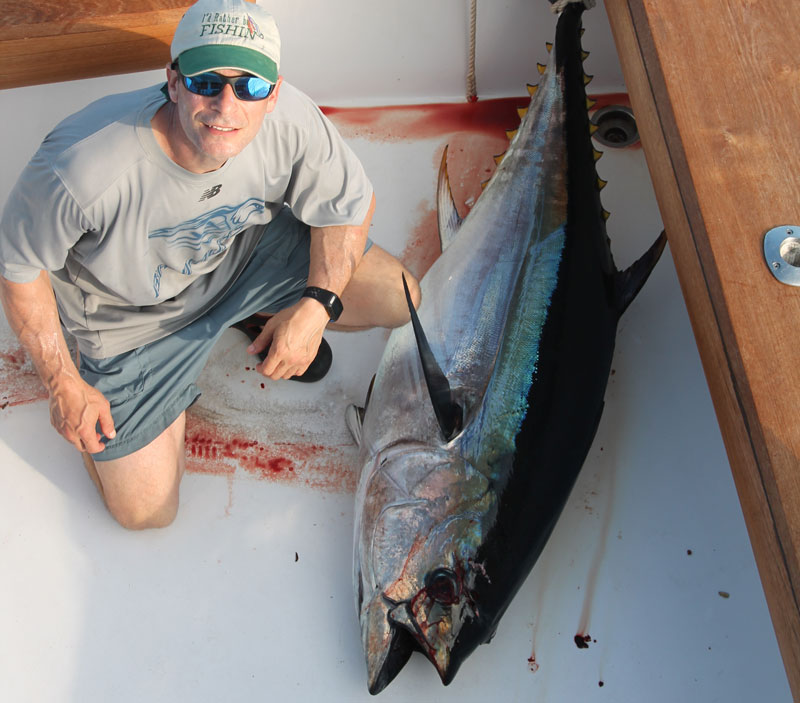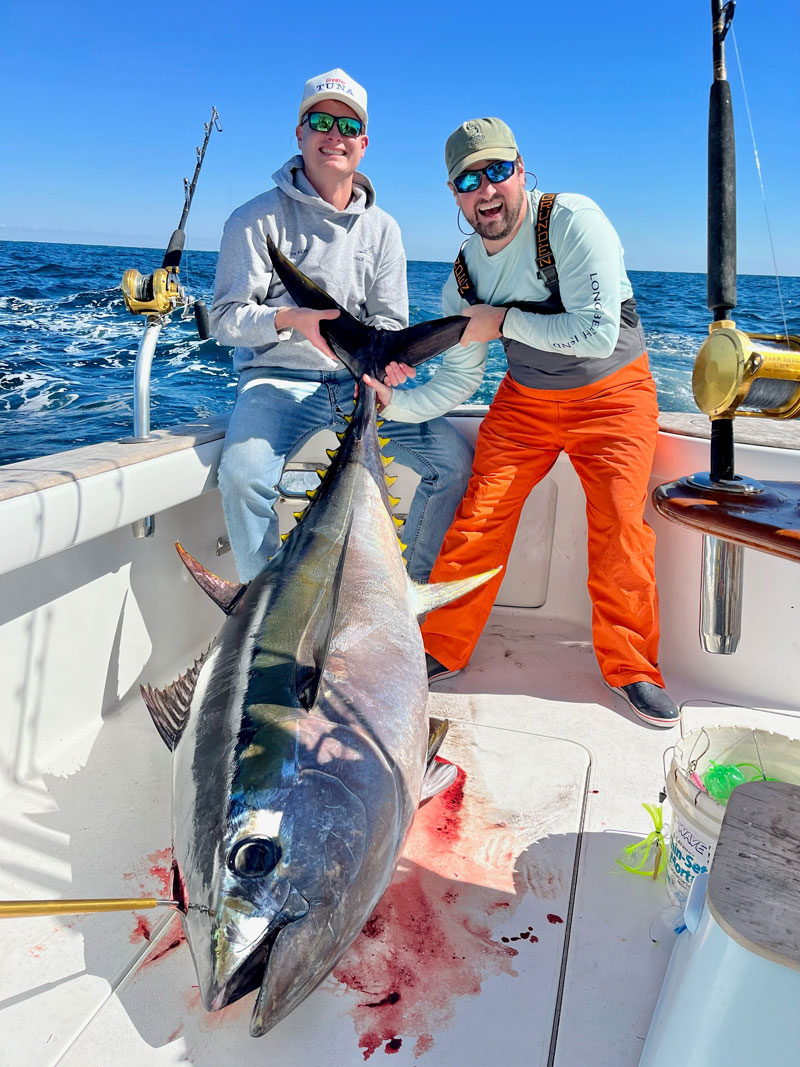You say you want to have a better shot at bagging a bigeye tuna while trolling a mixed spread this summer, but you don’t want to become so dedicated to the cause that you vastly reduce the chances of catching other species? Focusing solely on bigeye takes some serious dedication and comes at a cost, which includes catching fewer of the “regular” offshore pelagics you’d get to bite while pulling the usual spread of baits at the usual times in the usual ways. With a few tweaks to the method of your madness, however, you can boost the chances of hooking into one of these monsters during a regular day of offshore trolling—without drastically reducing the chances of catching other species.

What You’re Pulling While Trolling Offshore
- Make sure some elephant-sized offerings are in your spread. Horse ballyhoo on crystal and blue/white Ilanders are top picks. Keep their placement a bit farther from the other goodies than normal, so they stand out and stand alone.
- We hope you have a nice selection of spreader, splash, and sidewinder bars behind the boat. Bigeye love ‘em, and they act as teasers as well as hook baits. That can boost your catch on other species, as well.
- Run the big rigs. It takes 50s and 80s to put out the heat you need to best one of these beasts, and 30s just don’t quite cut it. If you have a limited selection set the big guns out with the biggest offerings in the spread and run smaller stuff on the smaller rigs in the hope of a yellowfin or a mahi (but recognize that if a bigeye happens to slam one of the smaller baits on a smaller rig the odds of getting it up to the boat are long).
Where You Pull It for Bigeye
- Stick to trolling canyon edges in the 150- to 500-fathom range. You’ll still encounter plenty of mahi and yellowfin in this depth range, but when you go outside of it the chances of running into a bigeye start falling.
- Keep an eye out for pilot whales and when you see some, stick around and work the area hard. Pilot whales and bigeye both feed down deep on squid and they’re often found in close proximity. Your very best visual indication that bigeye tuna are nearby is spotting those whales.
- If you see a big boil or two near a bait and don’t hook up, stick tight to the area. Because of those huge eyes these fish have, which are designed for seeing in deep dark waters, bigeye are light-sensitive and have pretty lousy vision when they’re near the surface in full light. They miss a lot more often than yellowfin, so a boil is a great indication that you’re in the right spot even if rods don’t start bending.

How You Pull It for Bigeye
- Go early and/or stay late. Bigeye are light-sensitive thanks to those huge eyeballs, and most of the time they’ll hit when the sun is very low on the horizon. Sharpies targeting them in specific often leave the dock at noon and troll until well after sunset. It’s not unheard-of for dedicated anglers to troll all night long, or troll for several hours after dark, switch to drifting for swordfish in the wee hours of the night, then switch back to trolling for the last hour or two of darkness and through the sunrise.
- Keep trolling speed in the six- to seven-knot range. As a general rule of thumb, slower is better in rough water and faster is better in calm water. In slick-calm conditions bumping it up to 7.5 knots works at times.
- When you’re in low-light conditions and the chances of encountering a bigeye go up, consider pulling a few of the smaller offerings out of the water and swapping them for larger ones. Yes, that can cut into your chances of catching other species, but capitalize on the moment.
Remember that hooking up with a bigeye is only half the battle. You can work up to a very good hookup-to-kill ratio with yellowfin and normal-sized bluefin, but these fish will average over 100 pounds and are often well over that mark. Battles can grow long and even with heavy gear standstills and tug-of-war fights are the norm. Make sure you have a high-quality harness aboard, make sure all of your tackle is in tip-top shape, and don’t be afraid to tag-team the fish when an angler gets whooped. That will happen to many of us and tired anglers make mistakes. Still, when you put one of those pelagic beasts into the cockpit every bit of prep work and sweat will pay off—and then some.